Interior styles overview
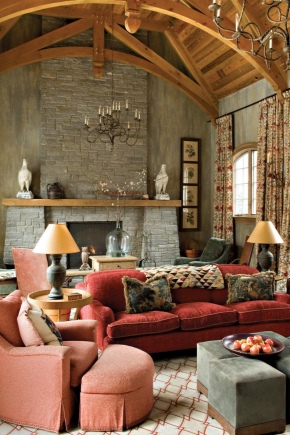
An interior style should be understood as a combination of features that have a different direction in the design of a room - its decoration and furnishings, as well as the addition of decorative elements. Styles in interior design have evolved over the centuries and today the choice of directions is quite extensive. Each style solution is based on certain canons, but despite this, there is always an opportunity to add an element of your imagination and creative ideas to the interior.
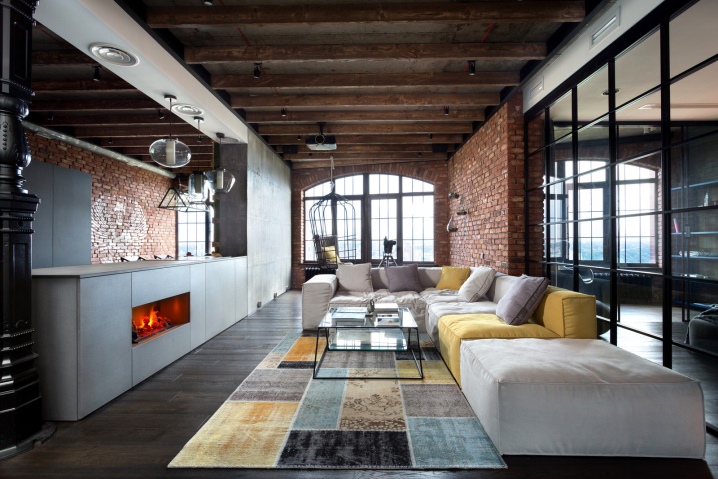
What are modern styles?
Interior styles fall into 3 main categories:
- classical;
- modern;
- ethnic.
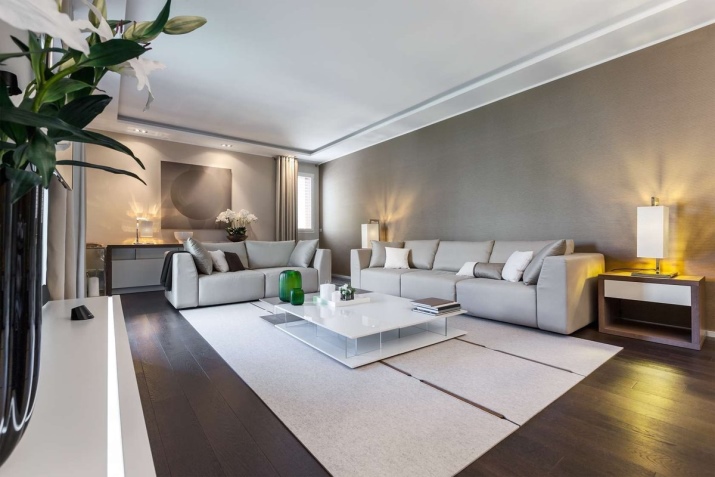

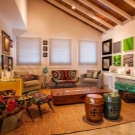
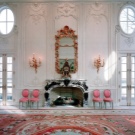
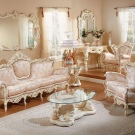
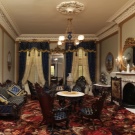
The description of each category consists of many styles that correspond to it, and this list is very diverse.
Consider options that relate to modern trends.
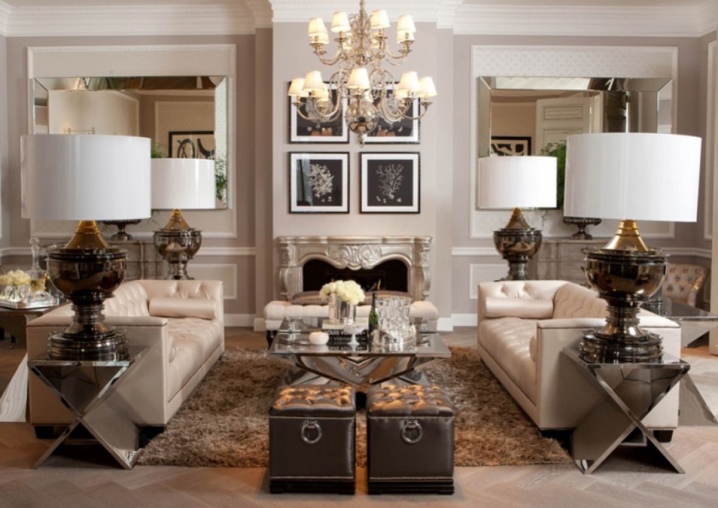
Minimalism style
It is considered the foundation on which other modern trends are based. This style is characterized by light tinted walls, and the floor is finished with parquet board or laminate. The ceiling is flat, lighting is provided by wall lamps or floor lamps. Furniture is used with straight contours, there are no decorative elements on it. The smoothness of the lines is brought into the interior with the help of upholstered furniture. Accessories are not used indoors - each item must have a functional load
... Paintings made using the expressionism or abstraction technique are considered an exception.
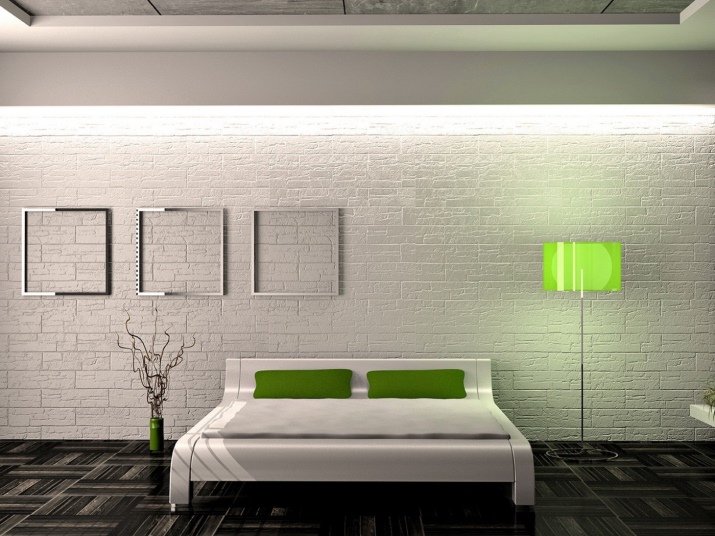
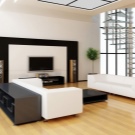
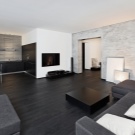
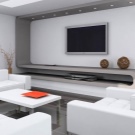


Industrial style
It implies the use of spacious rooms with a high ceiling level. There is no decoration on the walls and ceilings or is made of natural materials of a rough texture. Wood planks or tiles are used on the floor. Curtains are replaced with roller shutters or blinds. A tool rack can be used as furniture, and a multi-stage stepladder can replace the shelves. Any technical detail can become a decoration of a room - an old car disk will become the basis for a tabletop, and outdated gears - a wall panel.
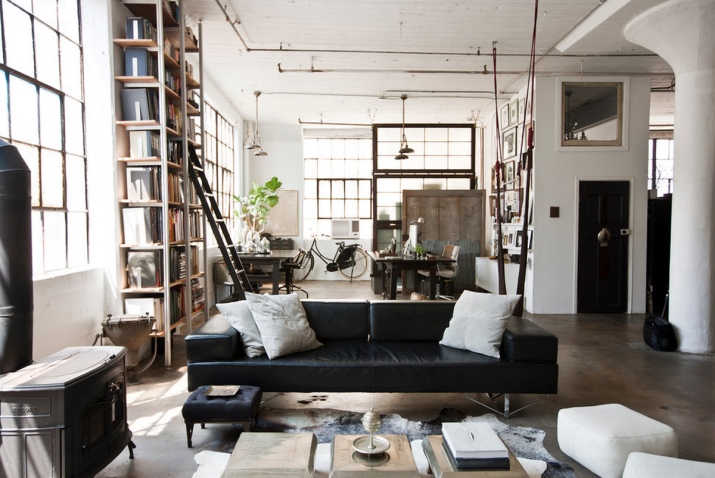
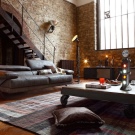
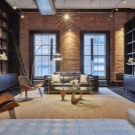

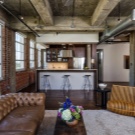
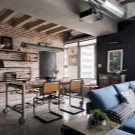
Art Deco style
The basis of the direction is bohemianism. The style appeared in the post-war period, when people had an indefatigable desire for beauty and interest in new things. Distinctive features of Art Deco are ceilings of several levels, geometric ornaments, as well as the use of exotic in the form of bearskin, furniture with crocodile leather trim, inlaid objects with ivory, etc. The use of high-quality and expensive fabrics, an abundance of lamps, and the framing of mirrors in the form of a disk with rays are characteristic. The era of industrialism is emphasized with stainless steel, aluminum elements, colored glass. For the floor, parquet and tiles are used, and the walls are painted in bright colors or pasted over with wallpaper that have geometric patterns.
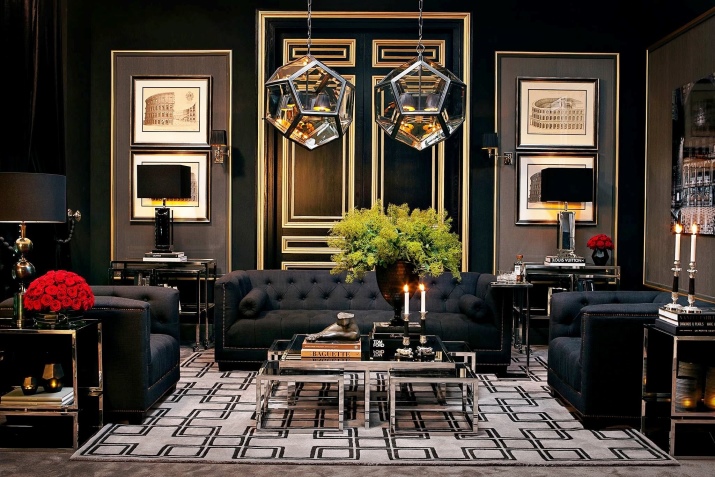
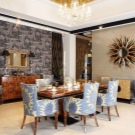
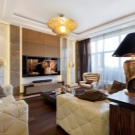
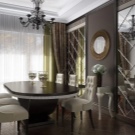
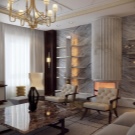
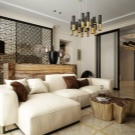
Grunge style
It stands out for its modest and laconic arrangement. Sometimes such a room looks like a "garage" option. To recreate it, you will need a spacious room with ceilings made of concrete or wooden partitions. The walls and ceiling are left in their original form or they are clad with wooden boards. The natural appearance gives the room a certain charm, which is achieved by using natural materials - stone, wood, glass. Fabrics are rarely used for decoration, and if they are present, then these are simple linen textures or matting. Furniture is chosen of high quality and expensive, such elegance looks attractive in such harsh conditions. The accessories are decorative wooden figurines, wrought-iron frames for mirrors, a retro-style poster on the wall, lamps of simple design located on the walls or descending from the ceiling.
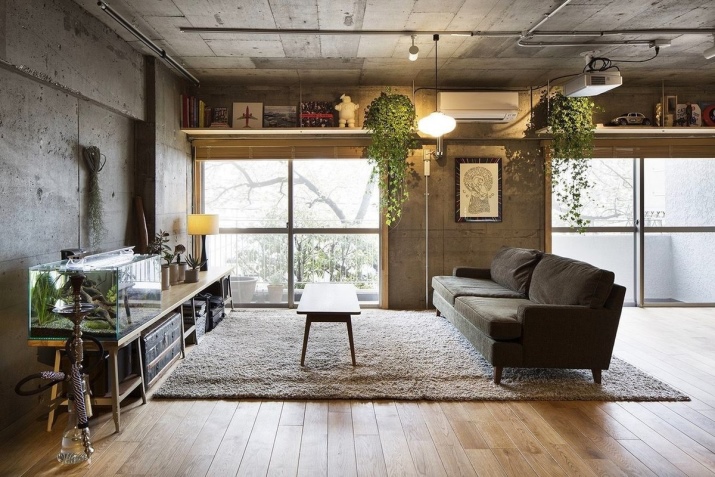

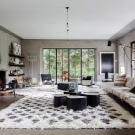
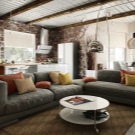


Loft style
Refers to an industrial version of glamor. To recreate the atmosphere of the old attic, former industrial premises are chosen. The combination of concrete beams, narrow metal stairs, ventilation boxes, pipes - creates a single look together with modern furniture. A characteristic feature is the absence of partitions dividing the space into zones. The walls of the room are left unfinished - this is a rough old brickwork or concrete surface. The floor can be cement, wood or tiled. The divider of space into recreation and work areas is a certain arrangement of furniture. Old wine barrels, wooden pallets, boxes are used as decoration.
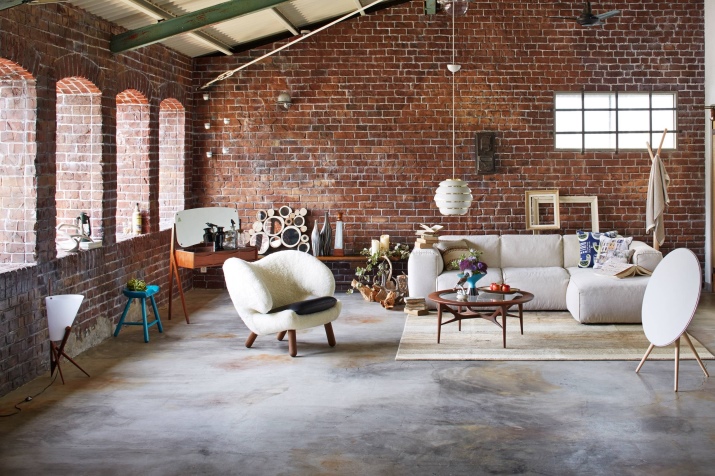
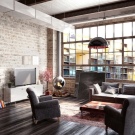

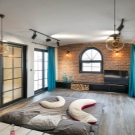


The modern style in interior design has evolved over the past 70-100 years, combining trends from different directions. Today, modern design is a trick that can be used to create a space that is effective and comfortable to live in.
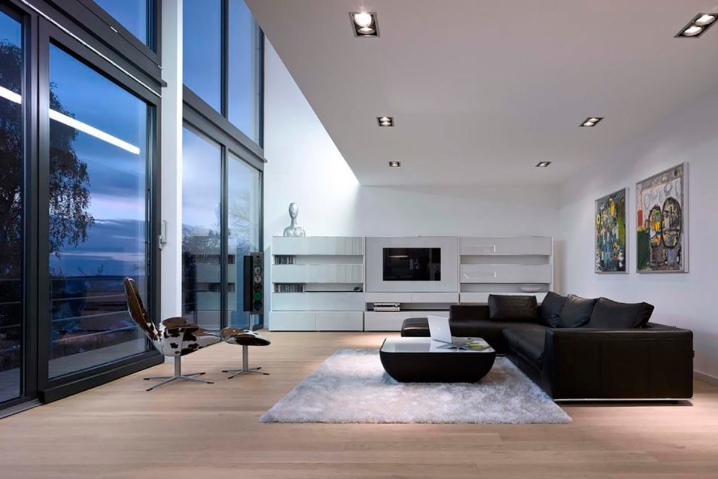
Historical
Historical trends in the design of premises mean the techniques of space design, which have been formed over several centuries and have not lost their relevance over time. Most often, historical styles in the interior are a characteristic of a particular stage in the development of architecture and architecture - baroque, gothic, empire, etc. In addition, the historical group also includes the style that has received an influence on its formation as a result of trends in philosophy or art.
The main task of the historical direction is the concept of recreating the era to which it belongs.

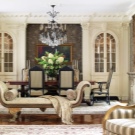
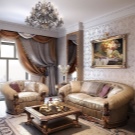
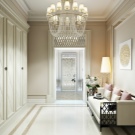
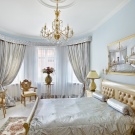
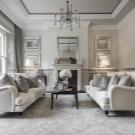
Romanesque style
Displays the canons of the Middle Ages, when castles and towers were erected, where a warlike knight could find shelter. The basic strokes of the style are fundamentality, which is reflected in the use of semicircular barn-type doors, curly windows, tapered upward, the presence of ceiling vaults, arches, massive columns, masonry on the floor, mirrors framed in bronze or gold, painting with biblical motives. The main shades are gray-black, green, purple, bronze. Colored stained-glass windows are placed in the windows, mosaics are laid out on the floor. A fireplace is always used, forged elements for the decor of simple but massive furniture. An interesting detail is the roughly knitted table and high-backed chairs, benches and stools. Instead of carpets, animal skins are used, and panels with scenes of knightly tournaments or hunting are used as decor.

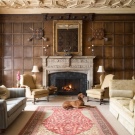
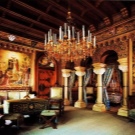
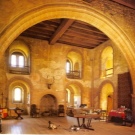
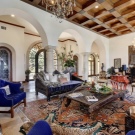
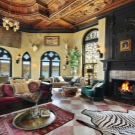
Victorian style
Represents the era of Queen Victoria's reign. It is characterized by a combination of old rococo, exotic colonial notes and gothic trends. The walls are decorated with wallpaper with raised patterns in the form of birds, flowers or fruits; the wallpaper can be replaced with fabrics. In a modern version, wall panels made of natural wood are used. Parquet or tiles are used on the floor. The use of antique furniture is encouraged, but the room must have an oasis where live plants are located.
The center of the interior composition is a fireplace and tall mirrors framed by a baguette.
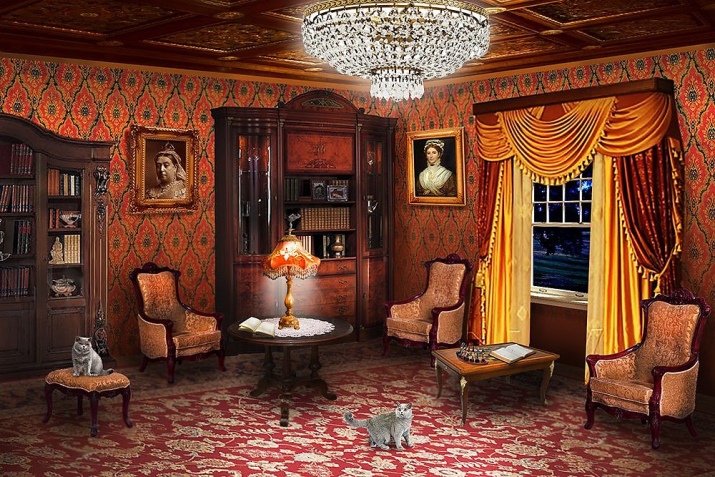
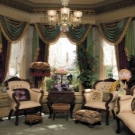
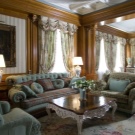
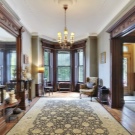
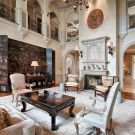
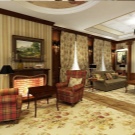
Georgian style
Describes the era of the reign of King George. This is a spectacular alliance of classics and a riot of Rococo trends.It implies the presence of a fireplace, mahogany furniture, wall and ceiling moldings, colored stained-glass windows. Wall decoration is divided into 3 parts: the bottom is covered with wood panels, the middle part is draped with fabrics or pasted over with wallpaper, the upper part is decorated with stucco molding. The floor is made of natural parquet, varnished or waxed. Woolen carpets add coziness to the atmosphere. Furniture is used in the form of headsets.
Lighting is equipped with lamps that simulate candles.
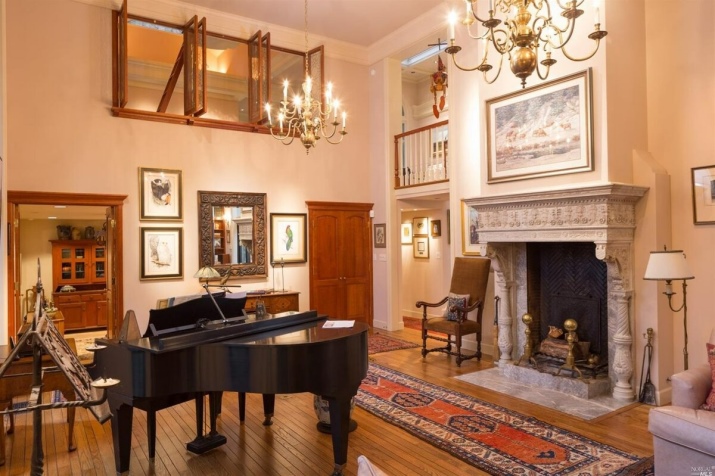
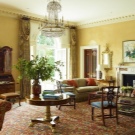
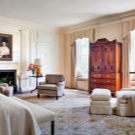
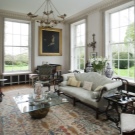

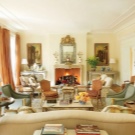
Historical styles appeared slowly, some of them appeared as a reflection of the time of their era, others were formed on the canons of national cultural traditions, there were also trends that appeared as a result of new trends in art.

Classic directions
Apartment design is arranged in styles that have the characteristic features of modernity or historicism. Often the name of the style speaks for itself and reflects its own characteristics. There are the most popular destinations that belong to the classics.
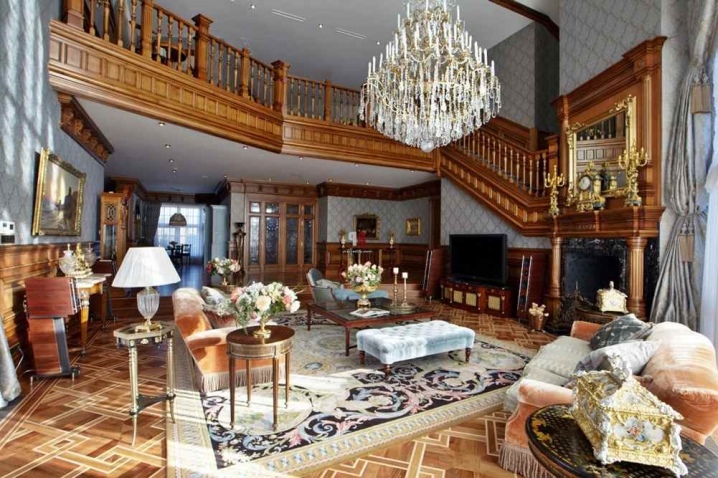
Modern
Roundness of lines, asymmetry of forms and multilevel character are characteristic. Various patterns and weaves are used to decorate the floor, walls, ceilings, flights of stairs, furniture. There is a craving for nature here, therefore, everywhere you can see an intersperse of plant elements in the design. The style combines practicality and grace, this is achieved through the use of stone, metal, glass, wood, painting, wall plaster, wallpaper. The ceiling is made in a smooth form or a stretch version is used. Parquet boards can be replaced by tiles. The furniture is comfortable, with twisted legs.
The fittings are elegant, inserts made of veneer, ivory, mother-of-pearl are allowed.
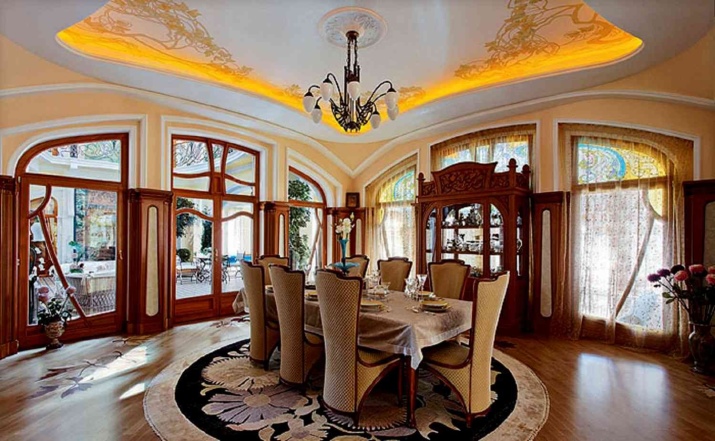
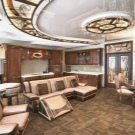


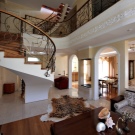
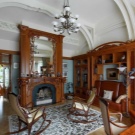
Gothic
The direction, which is characterized by the presence of high ceilings of a vaulted structure, and the floor is lined with colored tiles in the form of a checkerboard pattern. The whole concept of decoration in the Gothic style is directed upwards. Its features are pointed, the contours are light and graceful, striving for deliberate decorativeness. An indispensable attribute is the presence of colored stained glass windows with a traditional Gothic rose. There are arches, ceiling beams, fireplaces. Tapestries, frescoes, fleecy carpets, candles, figurines in the form of a crucifix or figurines of chimeras are used as decor. The furniture is massive, with forged elements and carvings.
The legs of the furniture are high, the backs of beds and chairs are also made high.

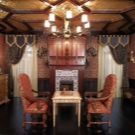
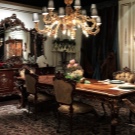
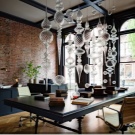


Empire style
A spectacular design that attracts with its magnificence, it is based on symmetry and poise. The floor is covered with parquet or marble slabs. The ceilings are high, covered with paintings and elaborate stucco moldings. White, bronze, purple, gold, blue, olive shades are used. The room has columns and portals, decorated with statues of lions, angels, sphinxes. Doors, like ceilings, are decorated with paintings and stucco moldings. The furniture is used from expensive types of wood, has fanciful forms and is decorated with painting or inlay.
Often this style was used to equip a chateau - a country aristocratic house.


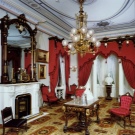
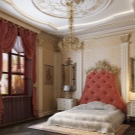

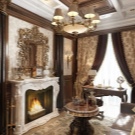
Classicism
Symmetry and harmonious simplicity are the motto of this style. The walls are covered with fabric wallpaper or painted in neutral tones. Stucco decoration is used, half-columns and columns are installed. The ceiling is made white or light beige, supplemented with stucco decorations. Parquet on the floor is laid out in the form of a mosaic, using elements from various types of wood. Natural stone and wood are used for decoration. Indoors use paintings, tall mirrors, shelves with books. For decoration, pale green, white, pink in combination with gold, light blue, blue are used. Furniture is chosen vintage, made of exclusive wood species and decorated with carved inserts. Natural wood is also applicable for wall surfaces.Crystal chandeliers are placed on the ceiling and walls, the windows are draped with velvet curtains.
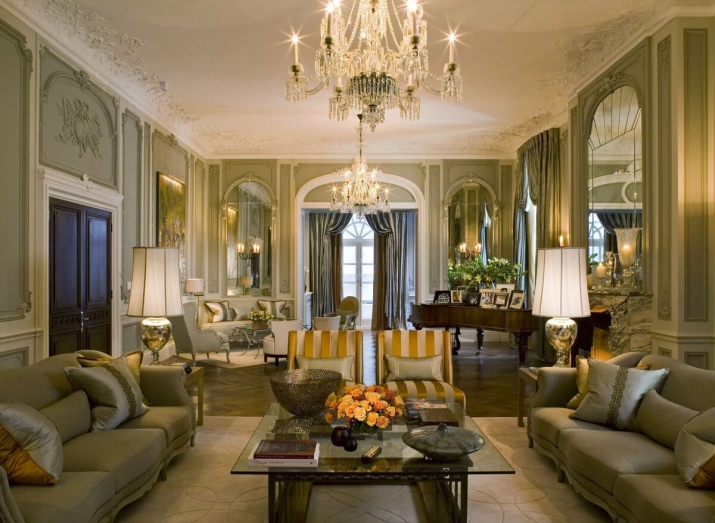
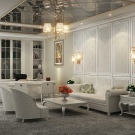
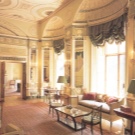
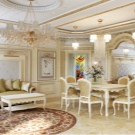
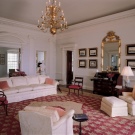
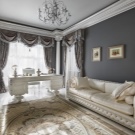
Baroque
The style can be embodied in a room with high ceilings; there is a gravitation towards antiquity, which manifests itself in the rhythm of the intertwining of curved lines. The style is intended to emphasize wealth and prestige; for this, painting, columns and bas-reliefs, stucco molding and sculptures are used in abundance. The color scheme involves the use of white, gold, bronze, purple, pale green, light blue shades. The baroque ceiling is characterized by rounded corners. The windows are large, decorated with stained-glass windows, the stucco molding is painted in bronze or gilding, paintings and mirrors are framed with gilded moldings. The furniture is high, the upholstery is solid, the legs are curved, the surfaces are decorated with carvings. A high canopy is hung over the head of the bed.
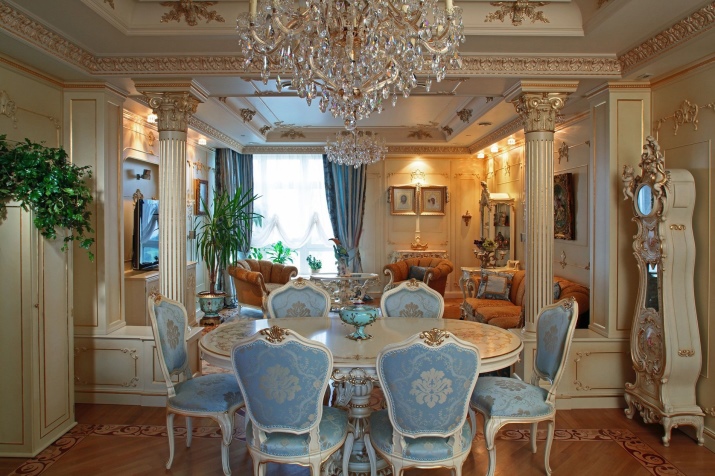
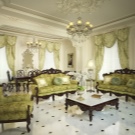
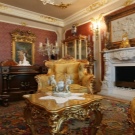

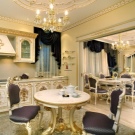
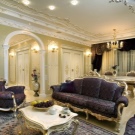
Rococo
The style is a continuation of the Baroque, but with a great decorative load. Attention is paid to the decoration of the painting in the mythological theme, there is an element of eroticism, comfort and luxury. Fancy curls are everywhere in the decoration, and even the columns can be twisted spirals. Symmetry is not maintained and gilding is used in moderation. White, pearlescent, pink, pale green, lilac predominate. The walls are decorated with wood panels and stucco moldings, chic crystal chandeliers are placed on the ceiling, the rooms have a large amount of upholstered furniture intended for boudoir relaxation. Everywhere there are screens, soft pillows, elegant furniture, paintings. The flooring is marble or parquet.
Fireplace, bronze clocks, candle candelabra will become obligatory attributes.
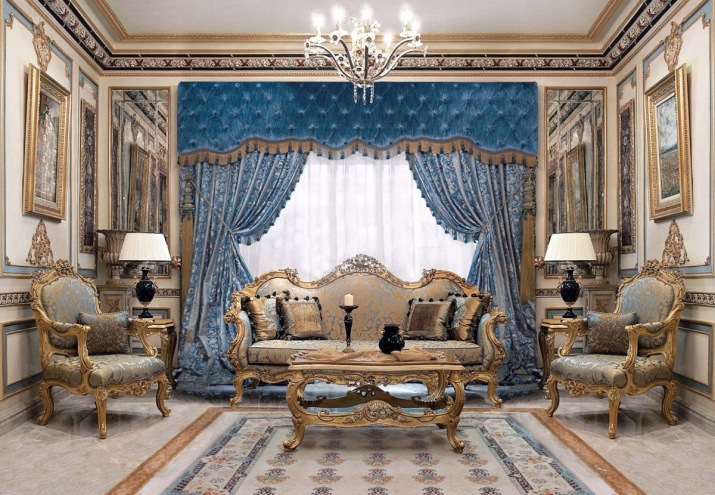
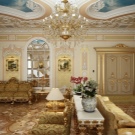
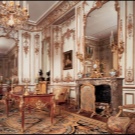
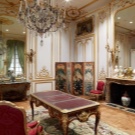
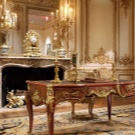
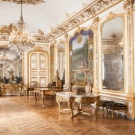
The list of design styles for the classic group implies the use of only natural materials for decoration, as well as luxury furniture and accessories.
Geographic and ethnic variations
Interior design varieties of a geographical or ethnic character are based on the principles of decorating living space that are specific to a particular area. The country where the style was born finds its echo in its name.
For example, the Turkish flavor gave life to the Ottoman style, in addition, the oriental traditions are also borne by the direction of Marrakech. Scotland and Belgium have introduced decor traditions, where the style is called Scottish or Belgian. The Georgian interior implies the traditions of winemaking, it is consonant with the Slavic motive, but there are also basic differences.
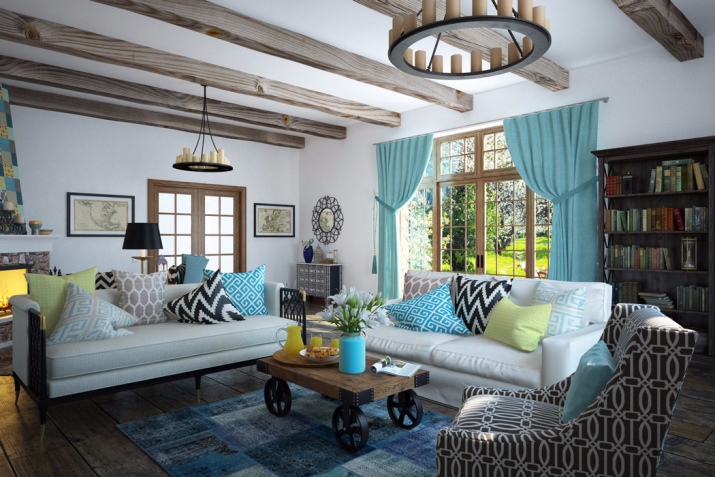
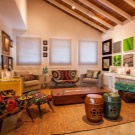

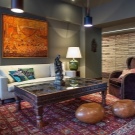


The Baltic decor has a nautical theme, the Dutch interior includes white and blue tiles, ceiling beams and red bricks. The fashionable interiors of England, the ancestor of which is London, carry restraint, stiffness and respectability. The interiors, the style of which is Irish, are consonant with him, but unlike the English direction, Irish tends more towards simplicity. The Danish interior gravitates towards minimalism and is a kind of Scandinavian trends, and houses in Bali strive for a riot of colors and vegetation in interior decoration.
The types of interiors that have ethnographic features are extensive, and their list can be continued indefinitely.
Ethnic and geographic interiors are interesting for their details.

Boho
Colorful, bold, relaxed, this design will suit creative people. The gypsy motif gives the boho style a certain ethnic touch; it is characterized by the presence of bright fabrics and handmade decor. Walls can be pasted over with bright fabrics or painted in the most daring shades. Furniture can be wicker or old, from the attic, with wrought iron elements. The abundance of pillows, patchwork rugs and rugs, knitted capes and bedspreads, woven paths - all this looks appropriate and brings colors to the overall color of the decoration.
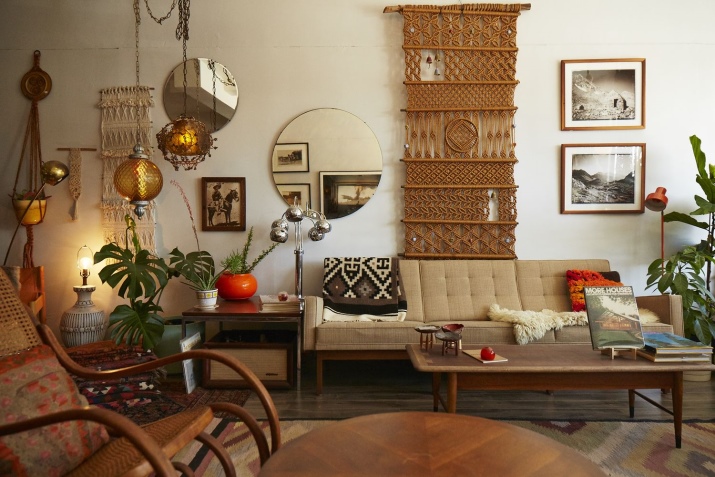


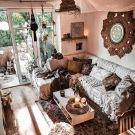
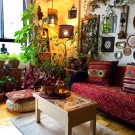
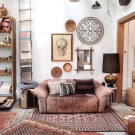
Moroccan
Combines Asian and African cultures. Bright oriental shades and patterns are acceptable, many elegant trinkets, aroma lamps, jugs made of clay and metal. The floor is laid out of a wooden board and covered with handmade rugs, if floor tiles are used, then they are arranged in the form of a mosaic. The walls are painted in bright colors of lilac, purple, green, turquoise. The ceilings are high, multi-layered, openwork gratings are placed on the windows, false windows are used as a shelf. The furniture is carved, dark in color, decorated with floral or patterned ornament. A light canopy is placed over the bed.

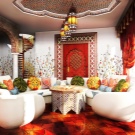
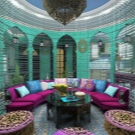
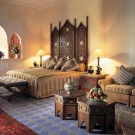
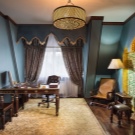
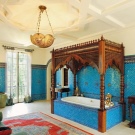
Provence
Combines the warmth of the South of France with rustic simplicity. The color scheme is in soft pastel shades of blue, cream, mint or lilac. The walls are covered with plaster and painted to simulate cracking. The ceilings have wooden beams that do not cover or paint. The windows are covered with translucent fabrics that allow light and air to pass through. The furniture is aged, with carvings and openwork legs, or it can be products of simple shapes. There are cute knick-knacks everywhere - napkins, embroidery, small pillows, craft boxes, photo frames. Flowers in pots are placed in the room, the walls are decorated with frames with a herbarium.
The application of the design style of a particular country will be successful if you know its features, as well as the architecture and traditions of the population characteristic of this area.

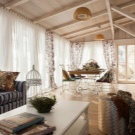
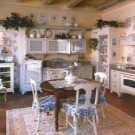

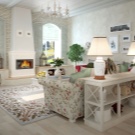
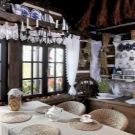
Unusual design
The use of modern style in the interior of the premises has become widespread. But quite often there is also an unusual combination that combines different epochal events of the last 100 years. For example, a design may contain design decorative elements that are timed to coincide with a man's flight into space. So, in a modern interior, photographs in black and white may appear on the space theme.
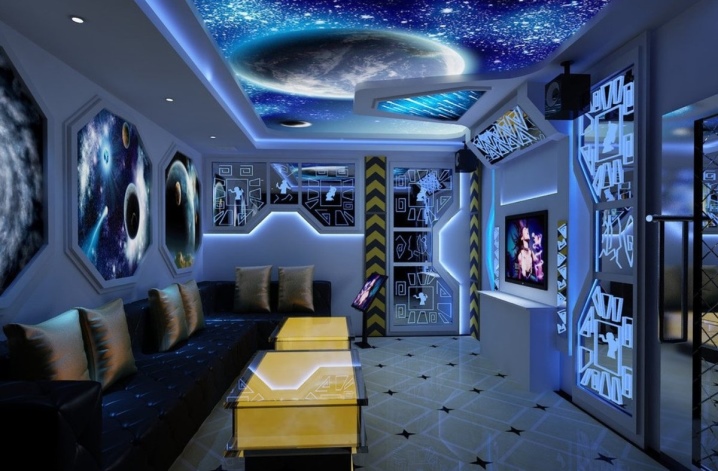
There are options for an interior made in a retro style, when some items from the former USSR are used - old radio, wall map, posters, furniture. If the decorative interior combines modern components and industrial modernism of the 50s, this can be manifested in the aviation direction and decorate the room with aircraft models, a rocket, drawings posted on the wall.
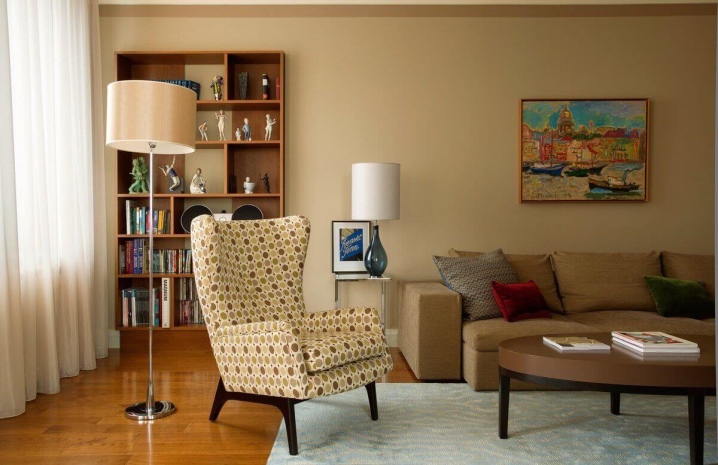
In an ordinary apartment, it is difficult to embody a palace or medieval interior, therefore design techniques use modern style trends or the use of ethnic trends. New-fashioned interior design trends are open to creativity and imagination. In limited spaces, functionalism and durability are preferable, therefore, a natural material is used for decoration, and the color scheme is often performed in black, beige or gray.
A fancy interior can also be made, when an apartment or house turns into a bungalow, where there is a tropical motive. The designer's fantasy can be extended to the design of a children's room, it can be arranged in the form of a fabulous haven for a unicorn or a little fairy.

How to choose?
When planning to renovate rooms, choose an interior for a small apartment or cottage, it is important to equip the dwelling in such a way that it is comfortable to be in it. For this purpose, experts recommend remembering or finding in the public domain the interiors in which you would like to live. When looking through the options, choose the nuances that you like the most. When deciding which style to choose, consider your habits and lifestyle.
In addition, an important point is the budget that you have for renovation, for example, the classic design assumes the presence of expensive exclusive furniture, and the Provence style allows the use of inexpensive and affordable options.When choosing a style, it is necessary to take into account what household appliances will be used, it is important that it be in harmony with the overall style of the interior.
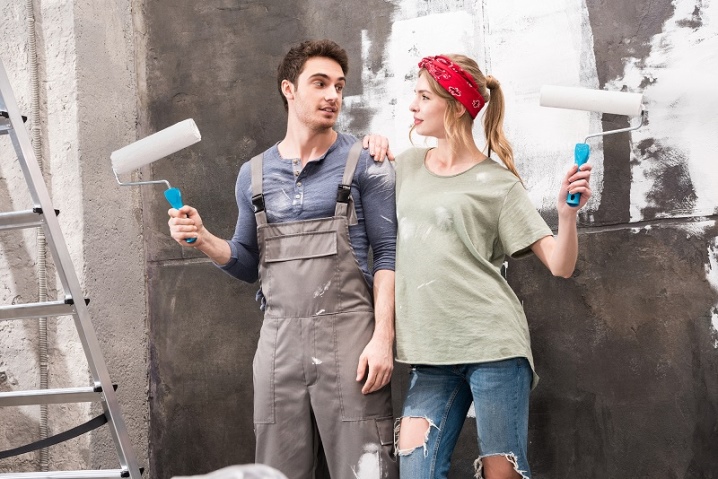
You can learn the basic design rules in Provence style from the video below.













The comment was sent successfully.